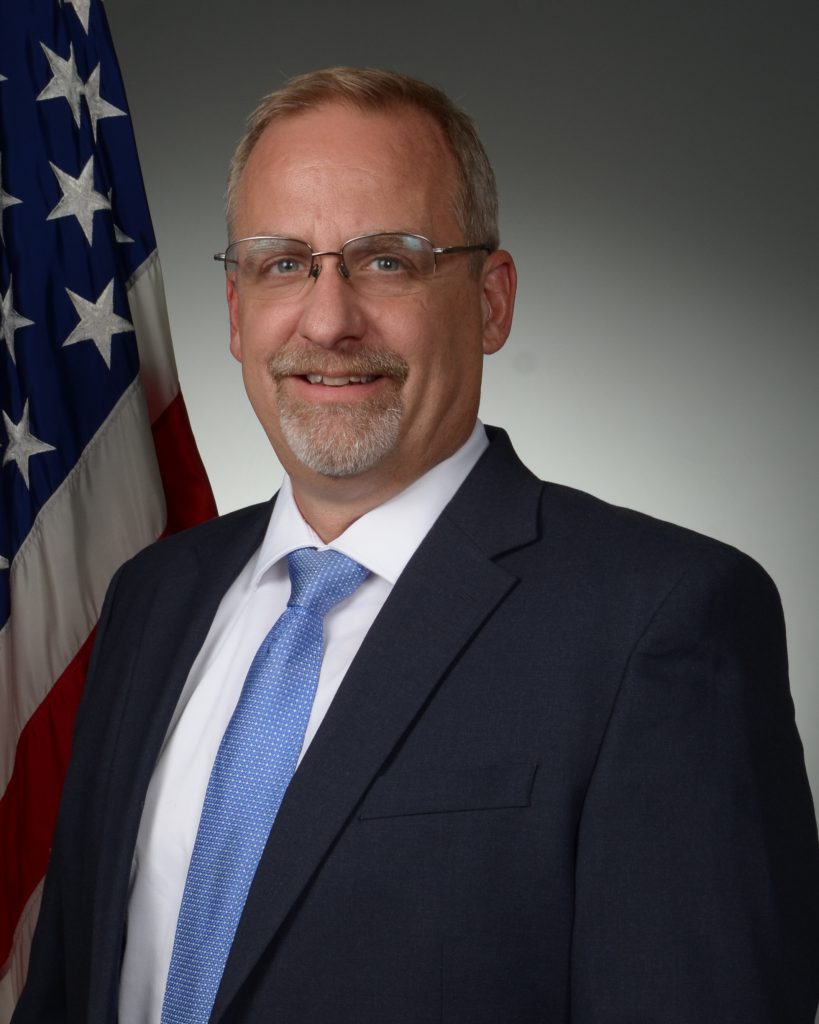AFRL Aerospace Systems Directorate welcomes new director
WRIGHT-PATTERSON AIR FORCE BASE, Ohio — A new leader has taken the helm at the Air Force Research Laboratory Aerospace Systems Directorate, as Dr. Michael Gregg officially assumed the role of director on Sept. 3, 2019.
Gregg takes over for acting director Col. Tim West, who is returning to his position as deputy director after nearly a year in the top role.
Although new to the directorate, Gregg is no stranger to AFRL. As a young Air Force officer, he spent the early years of his career working as a scientist at what was then the Rome Air Development Center at Hanscom AFB (now Rome Research Site in New York, home of the Information Directorate) and the Directed Energy Directorate at Kirtland AFB. He also spent time at Wright-Patterson AFB as a graduate student at the Air Force Institute of Technology.
After an accomplished career that included leadership roles within the Missile Defense Agency, C-17 System Program Office, Space and Missile Systems Center, and the C-5 and C-17 sustainment community, Gregg retired from the Air Force and accepted a position at Dayton Aerospace, Inc., where he spent the next six years working on Air Force programs.
For Gregg, it was a desire to get back into the laboratory environment that drew him to his new role in the Aerospace Systems Directorate. He said it is exciting to get back to the place where innovative ideas first begin to take shape.
“I really wanted to get back to the lab environment where we’re doing cutting edge things,” he said, “It’s rejuvenating to get back to the early science that we can ultimately transition out to meet capability needs.”
A self-described “tech geek,” Gregg says he has always enjoyed exploring new technologies and learning new skills. It is something he carries into his personal life as well. During his time away from the office, he enjoys restoring antique motorcycles and cars. “I do it all, from body work to welding and rebuilding engines,” he said.
It is the same spirit of curiosity and initiative he says he sees in his new work environment as well. Upon his arrival, Gregg spent time meeting with supervisors, technical leaders, and personnel throughout the directorate to get an up-close perspective on the technologies and the people.
“Everyone is so enthusiastic about what they’re doing,” he said of his first impressions. “I’m really excited about the level of high quality experimentation, work, dedication, and enthusiasm from the group here in the Aerospace Systems Directorate.”
Gregg said that his short-term goals for the organization include evaluating the current vision, processes, and communication strategy, and determining whether any adjustments should be made. But he said his main focus is on the future.
“I want to make sure we’re taking the right long-term perspectives. How do I position the directorate to execute in the 10 to 20 year range? I want to look at things like facilities and technology initiatives, making sure we’re postured to do what’s next.”
He said he also wants to promote collaboration among the AFRL technical directorates, bringing resources together to achieve maximum effectiveness in key technology areas. “I’ve been pleasantly surprised at the level of collaboration that’s already being done,” he said. “I want to determine what I can do to continue to foster that environment.”
Gregg brings to his new role a diverse background that he feels will serve him well in reaching across AFRL and throughout government and industry as well. He says his multi-faceted experience gives him a broad strategic perspective and professional ties to organizations throughout the life cycle, from basic research to the sustainment community. It is his hope that his professional network, along with the existing collaborative efforts already in place, will continue to drive and expand future partnering opportunities.
In the end however, Gregg says the mission is ultimately buoyed by the people of the Aerospace Systems Directorate. “I want to maintain the positive environment we have in place so that they can continue to come to work and be enthusiastic and have fun.”
Gregg’s own enthusiasm is apparent in his outlook on his new position.
“What better place to be than here, working with air vehicle and propulsion systems? That is the bedrock of the Air Force, developing that technology for what is next. So for me it was the crown jewel of AFRL to come work here.”

